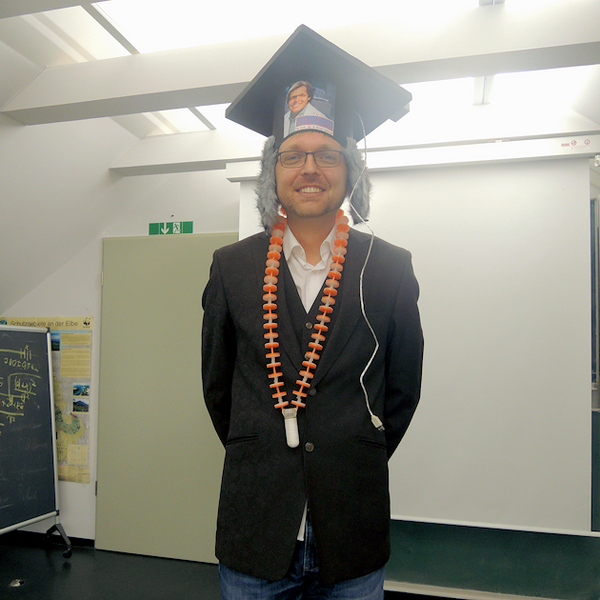
On the 20th of October 2016, Stefan Frank successfully defended his doctoral thesis “Factors controlling concentrations and losses of dissolved carbon and nitrogen from disturbed bogs in Lower Saxony (Germany)” at the Faculty of Natural Sciences of the Leibniz-University Hanover. The thesis has been prepared in the frame of the joint research project “Organic Soils in Emission Reporting”.
Especially during the last century, the natural hydrology and nutrient cycling of bogs in Lower Saxony has been disturbed by human activity such as peat extraction and agriculture. Nowadays, peatlands on bog peat are mainly used as grassland of varying intensity, but there are also rewetted areas. Groundwater levels and peat properties are determined by the land use and influence carbon and nitrogen cycling. Stefan’s doctoral thesis investigated the effects of these factors on concentrations and losses of dissolved organic carbon (DOC) and nitrogen (N).
Results clearly show that concentrations of both C and N depend on groundwater levels and thus land use. Especially a drained and intensively used grassland on bog peat showed extremely high concentrations of DOC and N species. DOC losses at this site (> 500 kg ha-1 a-1) were higher than most other values measured so far in the temperate climate. Furthermore, optimal rewetting with groundwater levels permanently at the surface of a former peat extraction area led to quasi-natural concentration levels. At all sites, dissolved organic nitrogen (DON) was the most important N species in the soil solution and the surface waters and should be considered when evaluation the water quality effects of peatland on bog peat [Publication].
The second study site was heavily anthropogenically influenced grassland where the peat remaining after peat extraction has partially been mixed with the underlying sand. There, DOC concentrations were surprisingly independent of the soil organic carbon (SOC) content, while DOC quality was influenced by land use history and thus SOC content [Publication].
Due to the high carbon dioxide emissions of drained peatlands and the low DOC concentrations of rewetted peatlands, DOC losses were of minor importance for the overall carbon balance (around < 10 % of the net ecosystem exchange), but might still influence downstream water bodies.

![[Translate to English:] [Translate to English:]](/media/_processed_/6/4/csm_titel_CO2Kampagne8_afeea2273e.png)
![[Translate to English:] [Translate to English:]](/media/_processed_/4/1/csm_titel_93px_CO2Kampagne8_9b0f3354d4.png)





